Sotheby's International Realty
- 138 Avenue Victor Hugo
- 75116 PARIS, France
- +33 1 40 60 50 00
Sotheby's International Realty
- 50 rue d'Auteuil
- 75016 PARIS, France
- +33 1 56 26 56 55
Sotheby's International Realty
- 82 Avenue de Wagram
- 75017 PARIS, France
- +33 1 46 22 27 27
Sotheby's International Realty
- Place Sainte Foy - 2 Rue de Chézy
- 92200 NEUILLY, France
- +33 1 41 43 06 46
Sotheby's International Realty
- Place Sainte Foy - 2 rue de Chézy
- 92200 NEUILLY, France
- +33 1 41 25 00 00
Sotheby's International Realty
- 37-39 rue de Turenne
- 75003 PARIS, France
- +33 1 48 87 14 41
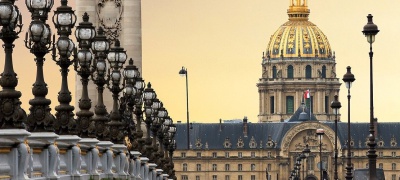
- Home
- >
- Right Bank
Right Bank
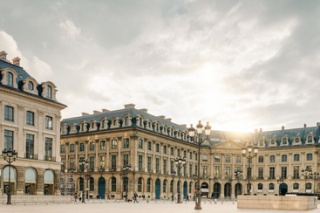
Paris 1st District
The 1st arrondissement of Paris, often referred to as "Le Premier," is one of the oldest and most historically significant areas of the city. It lies at the very heart of Paris and boasts a rich cultural and architectural heritage.
Historically, the 1st arrondissement has been a center of power and influence. It includes parts of the medieval city and has witnessed many key events in Parisian and French history. It encompasses the area that was once the city's core during the Middle Ages and the Renaissance.
The Louvre Museum, the world's largest art museum and a historic monument, is located in the 1st arrondissement. Originally a royal palace, it now houses an extensive collection of art, including the famous Mona Lisa and the Venus de Milo. Another notable landmark is the Palais Royal, with its beautiful gardens and arcades, originally built for Cardinal Richelieu and later used by the royal family.
The 1st arrondissement is also home to Sainte-Chapelle, a stunning Gothic chapel renowned for its magnificent stained glass windows depicting biblical scenes. The Conciergerie, a former royal palace and prison where Marie Antoinette was held before her execution, is another key historical site in the area.
The 1st arrondissement features elegant architecture with many buildings dating back to the Renaissance and Haussmann periods. The streets are lined with classic Parisian façades, charming courtyards, and impressive squares. The Place Vendôme, known for its luxury shops and the Vendôme Column, is a prime example of the area's architectural grandeur.
Several distinct neighborhoods make up the 1st arrondissement: Les Halles, historically a market area, now a major shopping and entertainment hub; Palais-Royal, with its cultural institutions and elegant gardens; and Saint-Germain-l'Auxerrois, known for its historic church and proximity to the Louvre.
The real estate market in the 1st arrondissement is highly desirable, with prices reflecting its central location and historical significance. Properties range from luxurious apartments in historic buildings to modern accommodations with views of iconic landmarks.
Living in the 1st arrondissement offers a unique blend of historical charm and modern convenience. The area is bustling with activity, from the busy shopping streets and high-end boutiques to the serene gardens and cultural institutions. The proximity to major attractions, restaurants, and cafés makes it a vibrant and attractive place to live.
The 1st arrondissement of Paris is thus a district where history, culture, and sophistication converge, providing a prestigious and lively environment for its residents and an enriching experience for visitors.
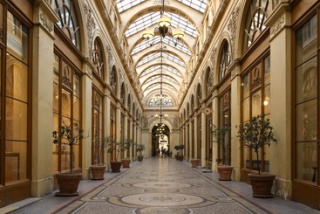
Paris 2th District
The 2nd arrondissement of Paris, often referred to as "Le 2ème," is one of the smallest arrondissements in the city in terms of area, but it is rich in history and economic activity. Known for its passages couverts, its financial districts, and its lively streets, the 2ème arrondissement offers a unique blend of historical heritage and modern dynamism.
Historically, the 2nd arrondissement has always been a center of commerce and business. It is here that the Bourse de Paris (Palais Brongniart) and numerous corporate headquarters are located, making it the financial heart of the French capital.
The 2nd arrondissement is famous for its passages couverts, shopping arcades dating back to the 19th century. The passages des Panoramas, Jouffroy, and Choiseul are among the most well-known, offering a unique shopping experience with their boutiques, cafés, and antique shops. These passages are living testaments to Parisian architecture and ambiance of yesteryears.
The quartier du Sentier, at the heart of the 2nd arrondissement, is historically known as the center of the Parisian textile industry. Today, it is undergoing a transformation, becoming a hub for start-ups and tech companies, while still retaining its old-world charm with its workshops and fabric stores.
The 2nd arrondissement also includes rue Montorgueil, a lively pedestrian street famous for its food markets, bakeries, restaurants, and cafés. It is a popular spot for both locals and visitors for its friendly and authentically Parisian atmosphere.
The architecture of the 2nd arrondissement is a mix of Haussmannian buildings, 18th-century structures, and modern constructions. The elegant buildings with their wrought-iron balconies and stone facades add to the charm of this vibrant district.
The real estate market in the 2nd arrondissement is diverse and growing. Properties range from historic apartments to modern accommodations, often sought after by young professionals and families looking to live in the heart of Parisian activity. Prices can be high, especially in the most desirable areas like Montorgueil and around the passages couverts.
Living in the 2nd arrondissement offers an urban lifestyle with easy access to shops, restaurants, theaters, and cultural venues. The district is well served by public transport, making it easy to get around the city.
The 2nd arrondissement of Paris is thus a district where tradition and modernity blend, offering a dynamic and attractive living environment for its residents and a fascinating destination for visitors.
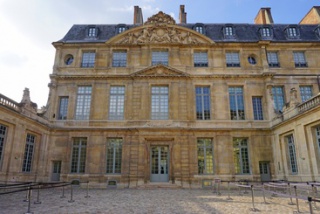
Paris 3th District
The 3rd arrondissement of Paris, often called "Le Marais" although it covers only part of the Marais district, is one of the oldest in the city. It is known for its rich historical heritage, museums, art galleries, and picturesque streets.
Historically, the 3rd arrondissement was a residential center for Parisian nobility, especially in the 17th and 18th centuries. Many mansions, such as the Hôtel de Soubise and the Hôtel de Rohan, testify to this era of architectural grandeur.
The 3rd arrondissement is home to several renowned museums, including the Picasso Museum, housed in the Hôtel Salé, which has an exceptional collection of works by Pablo Picasso. The Musée des Arts et Métiers, one of the oldest technical and industrial museums in Europe, is also located here.
The cobbled streets and charming squares of the 3rd arrondissement offer a unique ambiance. The Place des Vosges, although shared with the 4th arrondissement, is a perfect example of the classical architecture and beauty of this district. Local markets like the Marché des Enfants Rouges, the oldest covered market in Paris, add to the neighborhood's appeal.
The Haut Marais neighborhood, located in the 3rd arrondissement, is known for its designer boutiques, contemporary art galleries, and trendy cafés. It is a dynamic and fashionable area that attracts both locals and visitors.
The architecture of the 3rd arrondissement is a mix of medieval buildings, 17th-century structures, and modern constructions. The narrow, winding streets, stone facades, and inner courtyards add to the historical charm of this district.
The real estate market in the 3rd arrondissement is highly sought after, with prices often high due to its central location and historical character. Properties range from apartments in renovated mansions to modern lofts, attracting a diverse clientele from young professionals to families and investors.
Living in the 3rd arrondissement offers a unique experience of Parisian history and culture. The area is lively, with numerous restaurants, cafés, shops, and cultural venues. It is also well served by public transport, making access to other parts of the city easy.
The 3rd arrondissement of Paris is therefore a place where history, art, and modernity blend, offering an exceptional living environment for its residents and an unforgettable experience for its visitors.
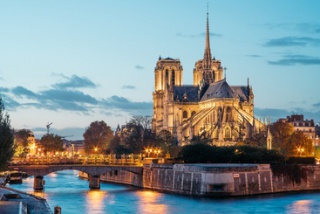
Paris 4th District
The 4th arrondissement of Paris, often associated with the Marais although it extends beyond this historic district, is one of the most emblematic in the city. Known for its rich architectural heritage, historical monuments, and lively streets, the 4th arrondissement is a true center of Parisian culture and life.
Historically, the 4th arrondissement has been a place of great political and religious significance. It houses some of the oldest parts of Paris, including the Île de la Cité, where the famous Notre-Dame Cathedral is located. Built between the 12th and 14th centuries, this cathedral is a masterpiece of Gothic architecture.
The 4th arrondissement is also famous for the Hôtel de Ville, the grand building of Paris City Hall, and the Place des Vosges, the oldest planned square in Paris, which is shared with the 3rd arrondissement. These monuments are testimonies to Paris's rich and complex history.
The quartier du Marais, which spans much of the 4th arrondissement, is known for its medieval streets, mansions, and museums. The Musée Carnavalet, dedicated to the history of Paris, and the Centre Pompidou, famous for its modern architecture and contemporary art collection, are two major cultural attractions in the district.
The 4th arrondissement also includes historic neighborhoods like Saint-Paul, with its charming cobbled streets, and the Île Saint-Louis, known for its elegant residences and picturesque views of the Seine.
The architecture of the 4th arrondissement is varied, ranging from medieval and Renaissance buildings to modern structures like the Centre Pompidou. The narrow, winding streets, stone facades, and historic squares add to the unique character of this district.
The real estate market in the 4th arrondissement is highly sought after, with prices often high due to its central location and historical significance. Properties range from apartments in historic buildings to modern accommodations, attracting a diverse clientele including young professionals, families, and investors.
Living in the 4th arrondissement offers an urban lifestyle with easy access to shops, restaurants, theaters, and cultural venues. The district is well served by public transport, making it easy to get around the city.
The 4th arrondissement of Paris is therefore a place where history, culture, and modernity blend, offering an exceptional living environment for its residents and a memorable experience for its visitors.
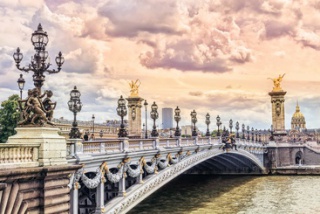
Paris 8th district
The 8th arrondissement of Paris is one of the most prestigious and iconic districts of the capital. Known for its wide avenues, famous monuments, and luxury boutiques, the 8th arrondissement is a center of political, economic, and cultural power.
Historically, the 8th arrondissement was developed in the 19th century under the reign of Napoleon III and Baron Haussmann, which explains its grand boulevards and distinctive Haussmannian architecture. It is a district that symbolizes Parisian luxury and elegance.
The 8th arrondissement is home to some of Paris's most famous landmarks, including the Arc de Triomphe, located on Place Charles de Gaulle-Étoile, and the Avenue des Champs-Élysées, often referred to as the "most beautiful avenue in the world." This iconic avenue is lined with luxury shops, theaters, cinemas, and cafés.
The Champs-Élysées district is also known for the Palais de l'Élysée, the official residence of the President of the French Republic. This area is an important political center and a symbol of governmental authority in France.
The 8th arrondissement also includes elegant residential areas such as the quartier de la Madeleine, known for its monumental church, and the quartier de Saint-Augustin, with its beautiful tree-lined avenues and Haussmannian buildings.
The architecture of the 8th arrondissement is a mix of Haussmannian buildings, 19th-century structures, and modern constructions. The grand boulevards, prestigious buildings, and green spaces like Parc Monceau add to the appeal of this district.
The real estate market in the 8th arrondissement is highly sought after, with prices often high due to its prestige and central location. Properties range from luxurious apartments in Haussmannian buildings to mansions and office spaces, attracting a diverse clientele including professionals, diplomats, and investors.
Living in the 8th arrondissement offers a sophisticated lifestyle with easy access to luxury boutiques, gourmet restaurants, theaters, and cultural venues. The district is well served by public transport, making it easy to get around Paris.
The 8th arrondissement of Paris is therefore a place where history, luxury, and modernity blend, offering an exceptional living environment for its residents and a must-see destination for visitors.
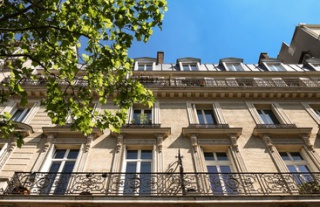
Paris 11th District
The 11th arrondissement of Paris, located on the right bank of the Seine, is a vibrant and diverse neighborhood known for its lively atmosphere, rich cultural life, and local history. It is often seen as a youthful and trendy area with a strong presence of artistic and social activities.
Historically, the 11th arrondissement was a center of craftsmanship and industry during the 19th and 20th centuries. The area experienced significant industrial growth, with many factories and workshops setting up there. Today, it is recognized for its lively atmosphere and cultural diversity.
The 11th arrondissement is famous for its lively neighborhoods such as Oberkampf, Bastille, and République. Place de la Bastille, once the site of the infamous Bastille prison, is now a major cultural and nightlife hub with numerous bars, clubs, and restaurants. The Bastille area also hosts the modern Opéra Bastille.
The 11th arrondissement also includes iconic places like the Canal Saint-Martin, a picturesque canal that runs through the neighborhood and is surrounded by trendy cafés, boutiques, and parks. The Canal Saint-Martin is a popular meeting spot for locals and visitors alike, offering a pleasant setting for strolls or leisurely hangouts.
The Oberkampf neighborhood is known for its youthful and bohemian vibe, with its numerous bars, restaurants, and concert venues. It is a popular nightlife spot, especially for those interested in live music and alternative culture.
The architecture of the 11th arrondissement is varied, mixing 19th-century buildings, modern constructions, and contemporary housing. The lively streets, former workshops converted into lofts, and green spaces like Parc des Buttes-Chaumont add to the charm of this dynamic district.
The real estate market in the 11th arrondissement is quite diverse. Prices are generally more affordable than in more central areas like the Marais or the 8th arrondissement, although some areas like Canal Saint-Martin and Oberkampf may have higher prices due to their growing popularity. The district attracts a varied clientele, from young professionals to families, artists, and expatriates.
Living in the 11th arrondissement offers a vibrant urban experience with easy access to restaurants, bars, shops, and cultural venues. The district is well served by public transport, making it easy to get around Paris.
The 11th arrondissement of Paris is thus a place where history, culture, and modernity blend, providing a dynamic and diverse living environment for its residents and an engaging experience for its visitors.
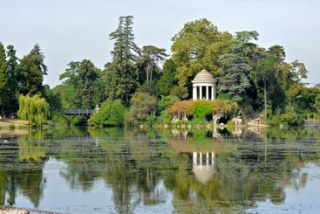
Paris 12th District
The 12th arrondissement of Paris, located on the right bank of the Seine, is a vibrant district that combines a tranquil residential life with cultural and commercial attractions. Known for its green spaces, lively markets, and historic sites, the 12th arrondissement is a place where urban life and relaxation blend harmoniously.
Historically, the 12th arrondissement developed as an industrial and commercial area, particularly around the Gare de Lyon, which played a key role in the expansion of the district. Today, it is a significant residential center with a strong presence of families and young professionals.
The 12th arrondissement is famous for its green spaces, notably the Bois de Vincennes, one of the largest parks in Paris. This park offers a wide variety of outdoor activities, including walking, cycling, picnicking, and attractions such as the Vincennes Zoo. The park is a popular relaxation spot for both locals and visitors.
The 12th arrondissement also houses the Place de la Bastille, a major historical site. The Place de la Bastille is surrounded by numerous bars, restaurants, and theaters and is a lively center of Parisian nightlife. The Opéra Bastille, located on the square, is one of Paris's main opera houses and offers a varied program of operas and ballets.
The 12th arrondissement includes neighborhoods like Bercy, known for its cultural life and commercial complexes, including the Parc de Bercy and the Cité des Congrès. The Bercy area is also home to the Bibliothèque François Mitterrand, a large national library with impressive modern architecture.
The architecture of the 12th arrondissement is a mix of Haussmannian buildings, repurposed former industrial structures, and more contemporary housing. Green spaces like the Bois de Vincennes and the wide boulevards contribute to the pleasant character of the district.
The real estate market in the 12th arrondissement is relatively affordable compared to some of Paris's more central districts. Properties range from apartments in Haussmannian buildings to modern accommodations in new residential complexes. The district attracts a diverse clientele, including families and young professionals seeking a balanced living environment between urbanism and nature.
Living in the 12th arrondissement offers a pleasant living environment with easy access to green spaces, local markets, restaurants, and cultural venues. The district is well served by public transport, making it easy to get around the city.
The 12th arrondissement of Paris is therefore a place where urban life and relaxation combine, offering a practical and enjoyable living environment for its residents and an authentic experience for its visitors.
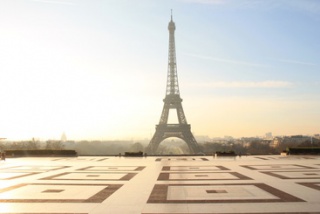
Paris 16th District
The 16th arrondissement of Paris is an elegant and prestigious district located on the right bank of the Seine. Known for its tree-lined streets, cultural institutions, and upscale residences, the 16th arrondissement is one of the most affluent neighborhoods in the capital.
Historically, the 16th arrondissement was developed in the 19th century, notably with the city's expansion beyond the Thiers fortifications. This development transformed the district into a chic residential area, attracting an affluent clientele.
The 16th arrondissement is famous for its many green spaces, including the Parc des Princes and the Bois de Boulogne, one of the largest parks in Paris. The Bois de Boulogne, with its lakes, paths, and gardens, is a popular relaxation spot for locals, offering activities such as walking, cycling, and boating.
The neighborhood is also home to leading cultural institutions, such as the Musée Marmottan Monet, which houses an important collection of Claude Monet’s works, and the Musée d'Art Moderne de la Ville de Paris, which features exhibitions of modern and contemporary art.
The 16th arrondissement is also the site of several embassies and diplomatic residences, adding to its prestige and international atmosphere. The Passy and Auteuil neighborhoods within the 16th arrondissement are particularly renowned for their beautiful avenues, luxury boutiques, and private schools.
The architecture of the 16th arrondissement is characterized by Haussmannian buildings, grand mansions, and modern residences. The wide avenues and elegant buildings create a prestigious and serene living environment.
The real estate market in the 16th arrondissement is among the most expensive in Paris, with high prices due to its prime location and exclusive ambiance. Properties include luxurious apartments in historic buildings and individual houses in sought-after residential neighborhoods.
Living in the 16th arrondissement offers a sophisticated lifestyle with easy access to green spaces, cultural institutions, luxury boutiques, and fine dining restaurants. The district is well served by public transport, though its calm and residential atmosphere contrasts with the busier areas of the city.
The 16th arrondissement of Paris is thus a place where luxury and tranquility meet, providing a refined living environment for its residents and an elegant experience for its visitors.
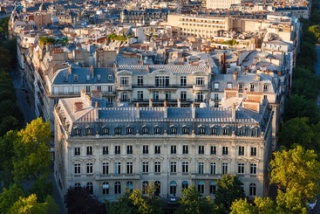
Paris 17th District
The 17th arrondissement of Paris, located on the right bank of the Seine, is an eclectic district that combines a peaceful residential atmosphere with lively commercial areas. The 17th arrondissement is known for its varied neighborhoods, local markets, and green spaces.
Historically, the 17th arrondissement saw significant expansion in the 19th century with urbanization and the construction of numerous Haussmannian buildings. The district has continued to evolve, integrating both residential and business areas.
The 17th arrondissement is famous for its diverse neighborhoods, including Batignolles, Monceau, and Ternes. The Batignolles neighborhood is known for its village-like atmosphere, local markets, and the Parc des Batignolles, a modern green space offering playgrounds, gardens, and sports facilities.
Parc Monceau is another major green space in the 17th arrondissement, known for its elegant landscape architecture, statues, and expansive lawns. It is a popular spot for walking and outdoor recreation.
The 17th arrondissement also features the Cité des Fleurs, a unique residential enclave with its individual houses and cobbled streets, offering a charming contrast to the more urban parts of the district. The Ternes neighborhood, with its Place des Ternes, is a bustling commercial hub with shops, restaurants, and markets.
The architecture of the 17th arrondissement is varied, mixing Haussmannian buildings, modern constructions, and individual houses in more residential areas. The wide streets, green spaces, and markets add to the vibrant and diverse character of the district.
The real estate market in the 17th arrondissement is also diverse. Prices vary depending on the neighborhood, with more affordable properties in less central areas and higher prices in sought-after neighborhoods like Monceau and Batignolles. The district attracts a varied clientele, from young professionals to families.
Living in the 17th arrondissement offers a balanced lifestyle with easy access to green spaces, local markets, shops, and restaurants. The district is well served by public transport, making it easy to get around Paris.
The 17th arrondissement of Paris is therefore a place where peaceful residential life and urban activity blend, providing a pleasant and diverse living environment for its residents and an authentic experience for its visitors.




